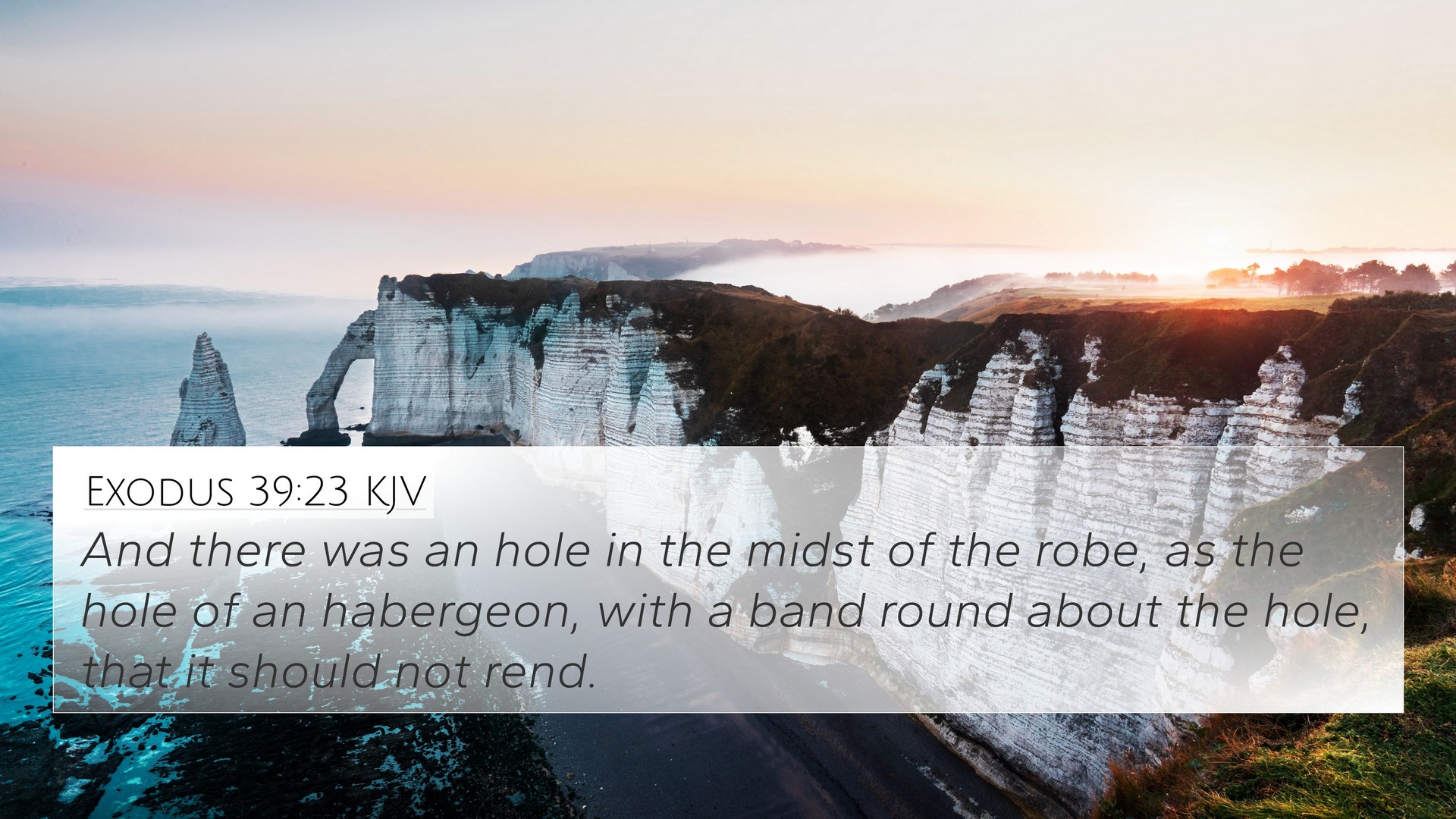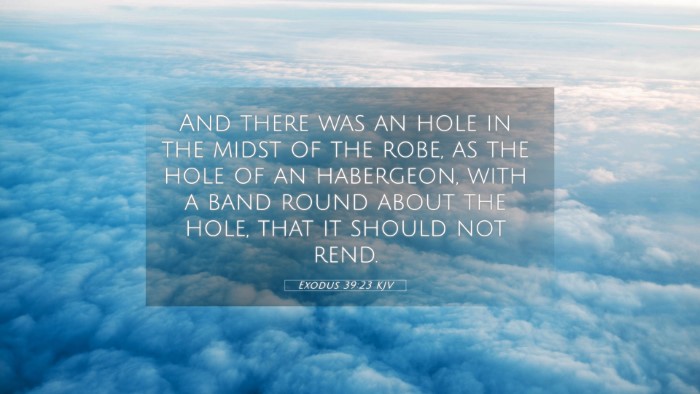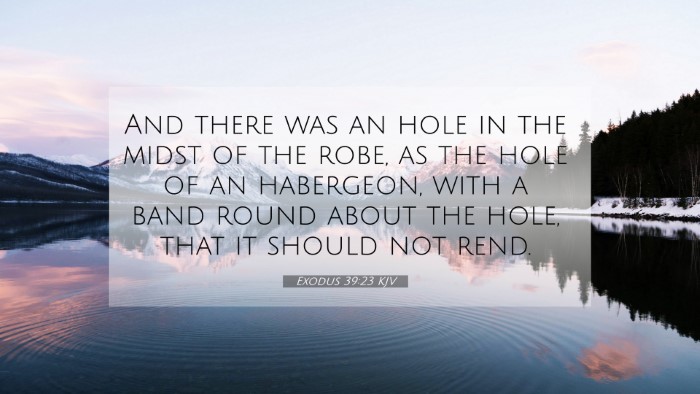Understanding Exodus 39:23
Exodus 39:23 states: "And they made the robe of the ephod of woven work, all of blue." This verse describes the creation of the robe worn by the high priest, emphasizing its unique craftsmanship and symbolism in the religious practices of Israel.
Contextual Background
The context of Exodus 39 is pivotal, as it details the garments made for Aaron, the high priest. This chapter is a summation of the work done for the Tabernacle, which served as a dwelling place for God's presence among His people. The robe of the ephod signifies not only the role of the priest but also the importance of approaching God with reverence and purity.
The Symbolism of the Robe
The color blue often represents heaven and heavenly communication in biblical symbolism. The robe's hue indicates the importance of divine connection for the priestly class. Albert Barnes notes that the blue robe reflects both the glory of God and the separation from commonality, a reminder of the sacredness associated with God’s appointed servants.
Commentary Insights
- Matthew Henry: He highlights the significance of the high priest's garments, noting they were made to display the glory and beauty of holiness. The robe signifies the righteous acts undertaken by the priest, which serve as a covering for the people.
- Adam Clarke: Clarke emphasizes the meticulous attention given to the details in the construction of the robe, noting that such precision reflects God’s care in establishing His covenant with Israel. The blue robe serves a dual purpose: practical as a garment and as a representation of the majesty of God.
- Albert Barnes: Barnes expands on the significance of the colors used in the priestly garments, including blue, stating they highlight the transition from the mundane to the divine as the priest represents the people before God.
Cross-References
Several biblical passages correlate with the themes found in Exodus 39:23:
- Exodus 28:31-35: Describes the robe of the ephod in more detail, explaining the bells and pomegranates that adorn it.
- Leviticus 8:7-9: Discusses the ceremonial functions of the garments and their role in priestly consecration.
- Hebrews 5:4: Connects the high priest's role to Christ, emphasizing the sanctity required for priesthood.
- Revelation 19:8: Speaks of the righteous acts of the saints being akin to the fine linen, representing purity before God.
- Numbers 20:28: Recounts Aaron's death, focusing on the significance of his priestly attire even in his last moments.
- 1 Peter 2:9: Relates to the concept of believers being a royal priesthood, echoing themes found in the Old Covenant.
- Philippians 3:20: Discusses the heavenly citizenship, tying back to the blue color representing heaven in the priestly robe.
- Psalm 104:2: Reflects on God being clothed with honor and majesty, drawing a parallel to the garments of the high priest.
- Isaiah 61:10: Describes garments of salvation, linking the responsibility of the high priest with the salvation brought through Christ.
Thematic Connections
The robe of the ephod not only plays a role in the physical act of priestly service but also represents broader themes within Scripture about mediation, holiness, and grace. This verse invites believers to explore deeper spiritual significance, as it connects to a narrative that spans both the Old and New Testaments.
Conclusion
Exodus 39:23 serves as a profound reminder of the sacred community between God and His people through the role of the priest. The meticulous design of the garments showcases God's attention to detail in His covenants. This verse and its themes resonate deeply within the tapestry of Scripture, inviting one to engage in a cross-referencing journey to fully grasp its implications.
Further Exploration
For individuals interested in tools for Bible cross-referencing, it may be helpful to utilize a Bible concordance or Bible cross-reference guide. These resources can provide clarity on how to find cross-references in the Bible and better understand connections between Bible verses.
By engaging with cross-referencing Bible study methods, believers can prepare sermons or deepen their understanding of how Bible verses relate to each other through inter-Biblical dialogue. Exploring these themes reveals the interconnected nature of Biblical texts, enriching one's faith and understanding.


